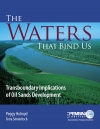List filtered to show Categories: Energy Watch [remove filter]
What is the highest environmental impact oil?
Mining vs. In Situ provides an initial, much-needed comparison of the environmental impacts of oil sands mining and in situ extraction.
Publication Type: Briefing Notes, Summaries & Fact Sheets
Topic Areas: Climate Change: Other Issues, Energy Watch, Oil Sands
Drilling Deeper: The In Situ Oil Sands Report Card
In Situ Oil Sands Report Card
Drilling Deeper provides a first-of-its-kind analysis of the environmental performance of in situ oil sands by comparing nine operational facilities.
Publication Type: Reports, Backgrounders & Position Papers
Topic Areas: Climate Change: Other Issues, Energy Watch, Oil Sands
In Situ Oil Sands Report Best Practices Checklist
In Situ Best Practices Checklist
Based on the in situ oil sands report card, this best practices checklist shows how industry can improve environmental performance.
Publication Type: Briefing Notes, Summaries & Fact Sheets
Topic Areas: Climate Change: Other Issues, Energy Watch, Oil Sands
This document provides background information about tailings and about Directive 074: Tailings Performance Criteria and Requirements for Oil Sands Mining Schemes.
Publication Type: Reports, Backgrounders & Position Papers
Topic Areas: Environmental Governance, Energy Watch, Oil Sands, Athabasca River
An Assessment of Oil Sands Company Submissions for Compliance with ERCB Directive 074
A comprehensive review conducted by the Pembina Institute and Water Matters found that only two oil sands operations reported they would meet new rules to reduce toxic tailings.
Publication Type: Reports, Backgrounders & Position Papers
Topic Areas: Environmental Governance, Energy Watch, Oil Sands, Athabasca River
Joint statement from an industry–environmental organization partnership that outlines the key elements for an effective Canadian cap-and-trade system for greenhouse gas emissions.
Publication Type: Letters & Formal Submissions, Presentations
Topic Areas: Sustainable Energy, Energy Watch, Climate Change: Carbon Pricing, Climate Change: Federal Action
Pipelines and Salmon in Northern British Columbia
Potential Impacts
Four major pipeline projects have been proposed for northern British Columbia over the next five years, including the Enbridge Northern Gateway Project. All of the proposed pipelines would cross and at times run parallel to important salmon habitats in the Upper Fraser, Skeena and Kitimat watersheds.
Publication Type: Reports, Backgrounders & Position Papers
Topic Areas: Energy Watch, Oil Sands, British Columbia: Other
Four major pipeline projects have been proposed for northern British Columbia over the next five years, including the Enbridge Northern Gateway Project. This fact sheet highlights the importance of salmon in northern British Columbia and gives an overview of the risks posed to salmon by the Enbridge oil sands pipelines.
Publication Type: Briefing Notes, Summaries & Fact Sheets
Topic Areas: Energy Watch, Oil Sands, British Columbia: Other
The Oil Sands Myths guide provides concise, referenced information on oil sands environmental impacts and management. An overview slide show is also available.
Publication Type: Reports, Backgrounders & Position Papers
Topic Areas: Climate Change: Other Issues, Energy Watch, Oil Sands, Athabasca River
This slideshow identifies a growing body of oil sands “spin” from federal and Alberta politicians and the oil sands industry and counters them with the plain facts about oil sands impacts.
Publication Type: Briefing Notes, Summaries & Fact Sheets
Topic Areas: Climate Change: Other Issues, Energy Watch, Oil Sands, Athabasca River
Transboundary Implications of Oil Sands Development
Oil sands development uses large quantities of freshwater and produces large amounts of toxic waste, posing a risk not just to local ecosystems but to those downstream as well. The Waters That Bind Us: Transboundary Implications of Oil Sands Development explores both the impact that oil sands development has on water resources and current water management practices in Alberta and the Northwest Territories. It includes six recommendations for improving water management practices and minimizing risks to water resources from oil sands development.
Publication Type: Briefing Notes, Summaries & Fact Sheets
Topic Areas: Energy Watch, Oil Sands
Transboundary Implications of Oil Sands Development
Oil sands development uses large quantities of freshwater and produces large amounts of toxic waste, posing a risk not just to local ecosystems but to those downstream as well. The Waters That Bind Us: Transboundary Implications of Oil Sands Development explores both the impact that oil sands development has on water resources and current water management practices in Alberta and the Northwest Territories. It includes six recommendations for improving water management practices and minimizing risks to water resources from oil sands development.
Publication Type: Reports, Backgrounders & Position Papers
Topic Areas: Energy Watch, Oil Sands
Climate Change, Energy Development and Water
With available fresh water resources expected to decrease as a result of climate change, Alberta faces the challenge of meeting its growing demand for water in a sustainable manner. This report draws attention to the decline of summer river flows, the future effects of climate change on water supply and the projected growth in demand for water for energy production and to meet the needs of a growing population. It also documents Alberta’s contribution to climate change through growing greenhouse gas emissions, which the Government of Alberta will allow to continue to increase through 2020.
Benchmarks for Implementing Alberta's Land-Use Framework
This report is a response to the final version of the Alberta Land-use Framework. It recommends that the Government of Alberta take actions in six key areas to translate the LUF’s policy direction into meaningful change on the ground.
Publication Type: Reports, Backgrounders & Position Papers
Topic Areas: Environmental Governance, Energy Watch, Oil Sands
Impact on Birds of Tar Sands Oil Development in Canada's Boreal Forest
The extraction and refining of bitumen from Canada’s oil sands is taking a significant toll on migratory birds throughout North America. This report outlines the effects of the oil sands industry on migratory bird populations in Alberta’s boreal forest and along the Western Hemisphere’s flyways.
Publication Type: Reports, Backgrounders & Position Papers
Topic Areas: Energy Watch, Oil Sands
Cette fiche d’information fournit un vue d’ensemble des données présentes dans la publication de l’Institut Pembina “La fièvre des sables bitumineux: Les conséquences écologiques de la ruée vers les sables bitumineux du Canada”.
Also available in English.
Publication Type: Briefing Notes, Summaries & Fact Sheets
Topic Areas: Climate Change: Other Issues, Energy Watch, Oil Sands, Athabasca River
Implementing Alberta's Land-Use Framework
In this report, the Pembina Institute and the Canadian Parks and Wilderness Society recommend specific actions for the Government of Alberta to take in six key areas to translate the Land-Use Framework’s policy direction into meaningful change on the ground.
Publication Type: Reports, Backgrounders & Position Papers
Topic Areas: Environmental Governance, Energy Watch, Oil Sands
Correcting the Course of Cumulative Environmental Management in the Athabasca Oil Sands
Recognizing the urgent need for environmental management and the benefits of engaging stakeholders, the Pembina Institute puts forward recommendations for a new multi-stakeholder approach to environmental management in the Athabasca oil sands.
Publication Type: Reports, Backgrounders & Position Papers
Topic Areas: Energy Watch, Oil Sands
Oil Sands Fever Strikes Edmonton
The Pembina Institute's new report, Upgrader Alley, provides the first in-depth look at the environmental impacts of upgrading oil sands bitumen in the Edmonton region. It recommends that the Government of Alberta only approve new projects once environmental and infrastructure plans are completed and implemented.
Download the full report.
Download the fact sheet.
Publication Type: Reports, Backgrounders & Position Papers
Topic Areas: Energy Watch, Oil Sands
Oil Sands Fever Strikes Edmonton
Oil sands production in northern Alberta could triple by 2020, to four million barrels a day. As a result of this increasing oil sands production, a major industrial expansion of bitumen upgraders is underway northeast of Edmonton. This so called "Upgrader Alley" is expected to handle early half the oil sands production, right on Edmonton’s doorstep.
Publication Type: Briefing Notes, Summaries & Fact Sheets
Topic Areas: Energy Watch, Oil Sands




